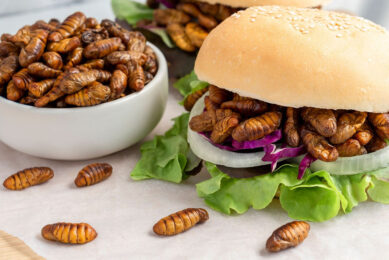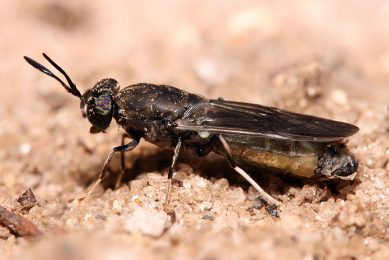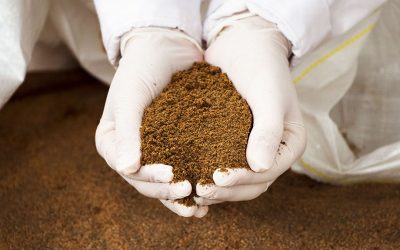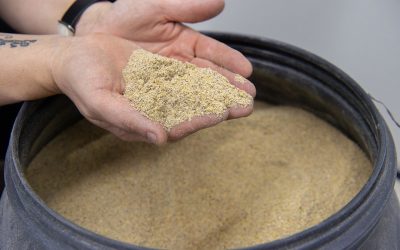The health-promoting potential of the black soldier fly
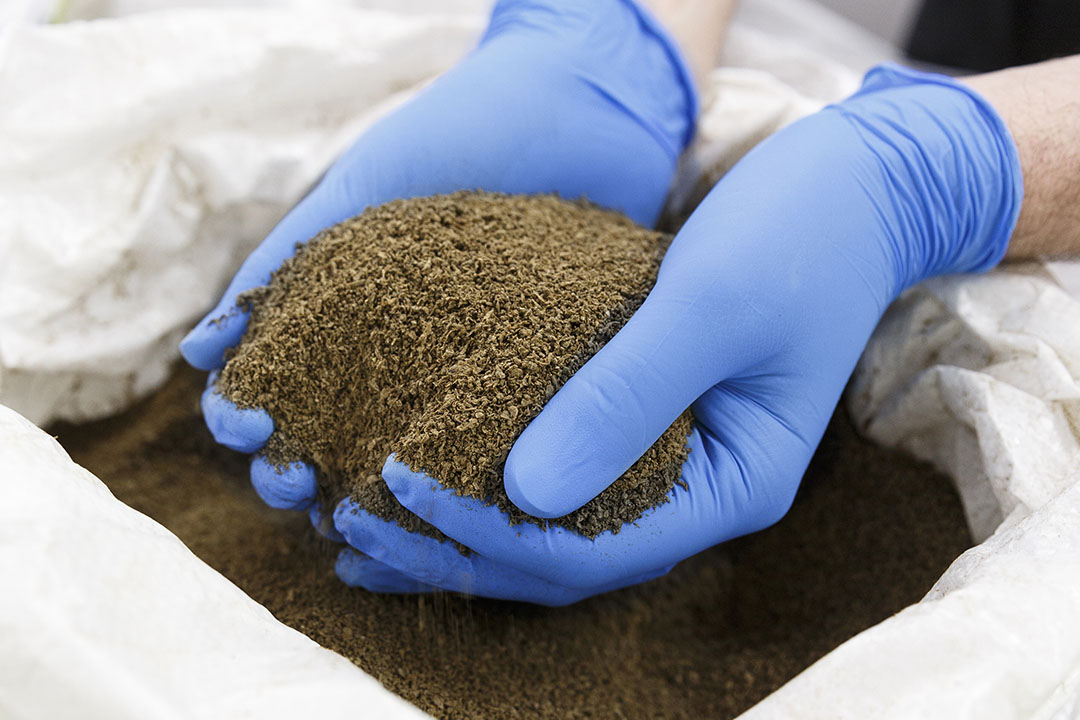
For the first time, the antioxidant effect of insect protein has been investigated in real-time conditions. It appears that black soldier fly protein could have a health-promoting effect when included in animal feed.
In a new study researchers have investigated the health-promoting potential of the black soldier fly(BSF) as an ingredient in animal feed. It appears that BSF protein derivatives contain low-molecular-weight peptides that are known for their antioxidant effect. This is why including BSF derivatives in, for example pet food and aqua feed, could promote animal health.
Studying antioxidant activity
The study was carried out by the University of Liège in Belgium together with insect company Protix. Dr Aman Paul, product R&D director at Protix explains that this study differs from previous research because of the distinctive research method used: “Previous studies were mostly based on a classical molecular radical scavenging approach. During this study, for the first time, we used enzymes and cells originating from the animal body to investigate the antioxidant activity of black soldier fly (BSF) protein derivatives.”
The study was conducted at Center for Oxygen, Research and Development (part of CIRM, University of Liège, Belgium). One of the raw materials (PureeX) used in this study has already been on the market for several years. PureeX is also the raw material used to produce insect protein meal (ProteinX). According to Dr Paul, previous studies were based on raw materials made in a lab and this was the first time that antioxidant activity was studied on samples (i.e. protein derivatives) produced in factory settings.

Antioxidant potential: 3 parameters
The researchers measured the antioxidant potential of the BSF by looking at 3 parameters; radical scavenging activity, neutrophil response modulation and myeloperoxidase (MPO) response modulation. Aman Paul explains what these parameters stand for and how they represent antioxidant potential:
- Radical scavenging activity represents the ability of a product to stabilise molecules such as DPPH and ABTS, either by hydrogen atom or single electron transfer. Both DPPH and ABTS assays are commonly used in food and feed industry to measure the antioxidant potential of ingredients. Most previous studies used this approach.
- Neutrophils are white blood cells that are responsible for primary defence against pathogens. Neutrophil-mediated defence occurs through:
(1) phagocytosis;
(2) Degranulation (release of enzymes and antimicrobial peptides e.g. myeloperoxidase and lactoferrin); and/or
(3) Release of neutrophil extracellular trap.
Some of these processes result in the production of reactive oxygen species (ROS) such as superoxide anions, hydroxyl radicals, etc. (which are responsible for inactivation of pathogens). These molecules are crucial for host-defence mechanisms in the animal. However, excessive ROS generated during host defence can react with enzymes, proteins, lipids, etc., of body cells and result in the development of various health conditions (for e.g., cellular aging, cancer, etc.). Neutrophil assays conducted during this study evaluated the potential of samples to scavenge ROS produced as a result of neutrophil activity. - Myeloperoxidase enzyme released during neutrophil response can produce hypochlorous acid from hydrogen peroxide and chloride ions. Additionally, this enzyme is capable of oxidizing tyrosine into tyrosyl free radicals. Both products of myeloperoxidase oxidation (hypochlorous acid and tyrosyl free radicals) are crucial for inactivating pathogens. What’s more, the repetitive interaction of these molecules with animal cells can cause inflammatory damage. 2 myeloperoxidase assay were performed during this study (classical and SIEFED assay). These assays measure the ability of samples to either stabilise ROS produced as a result of myeloperoxidase activity and/or inactivate the active form of myeloperoxidase enzyme.
 Insect Protein
Insect Protein
The popularity of insect meal as a new protein has taken off – find out about new developments, regulations and innovations.
Study outcome
In the study, the researchers used chicken meal and fishmeal as industrial benchmarks, since both are frequently used in pet food and aquafeed. The results of the study show that chicken meal and fishmeal are ineffective in suppressing the oxidative damage resulting from neutrophil and myeloperoxidase responses. Aman Paul: “Moreover, these ingredients even exhibit pro-oxidant activity in some models examined during our study. On the other hand, BSF protein derivatives could be effective in suppressing the oxidative damage resulting from neutrophil and myeloperoxidase responses.” The outcomes of the study indicate that BSF protein derivatives could potentially be included in pet food and aquaculture feed formulations as health-promoting ingredients.
Animal health benefits
According to the researcher, BSF protein derivatives could promote the health of pets and fish: “Ageing is one of the biggest challenges in dogs and cats. Ageing can accelerate the free radical damage in a pet’s body, which might lead to a wide range of health disorders (e.g. locomotor malfunctioning). It appears that BSF protein derivatives might help in suppressing the free radical damage in a pet’s body. On the other hand, aquaculture organisms are at constant risk of pathogenic bacterial invasions, which may result in the development of various health conditions including reduced immunity, ageing, etc. Our research indicates that BSF protein derivatives could reduce the oxidative damage occurring as a result of pathogenic invasions and improve the immune health of fish.” In Europe including insect proteins in pet food and aquafeed is legal and has been rapidly gaining attention. Aman Paul writes that insect protein is particularly suitable for young animal feed, since young animals grow fast and are developing their immune system. “This research provides concrete evidence on a molecular level under real-time conditions.




